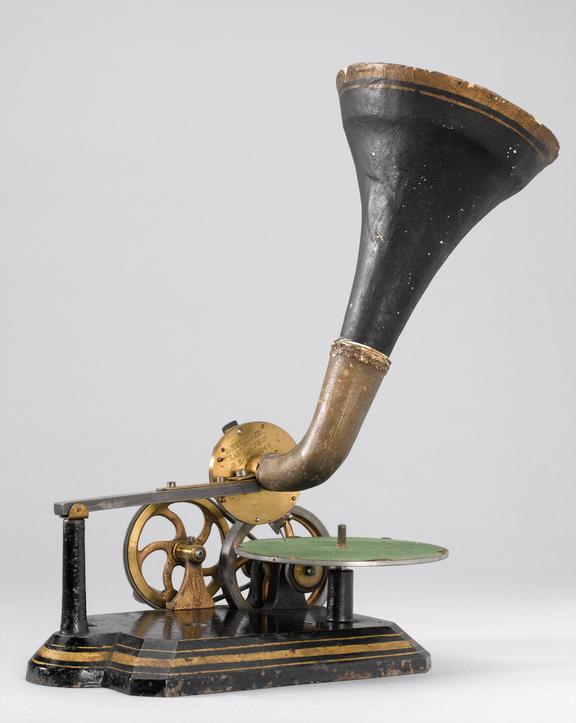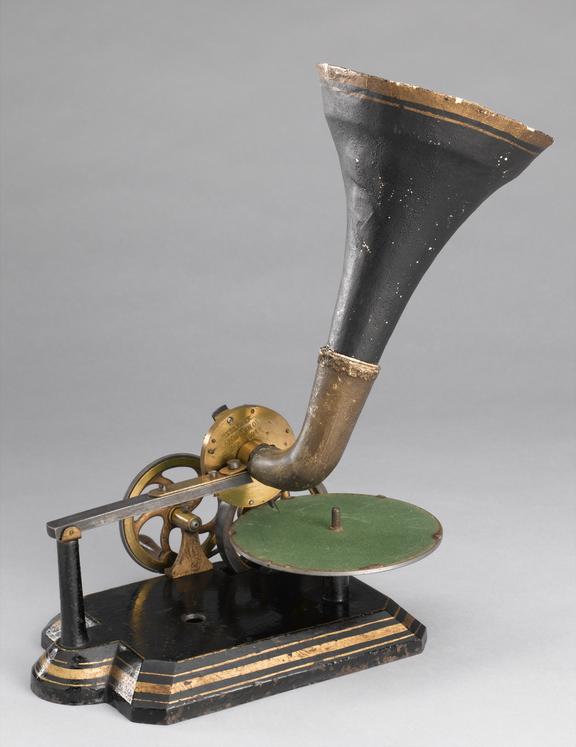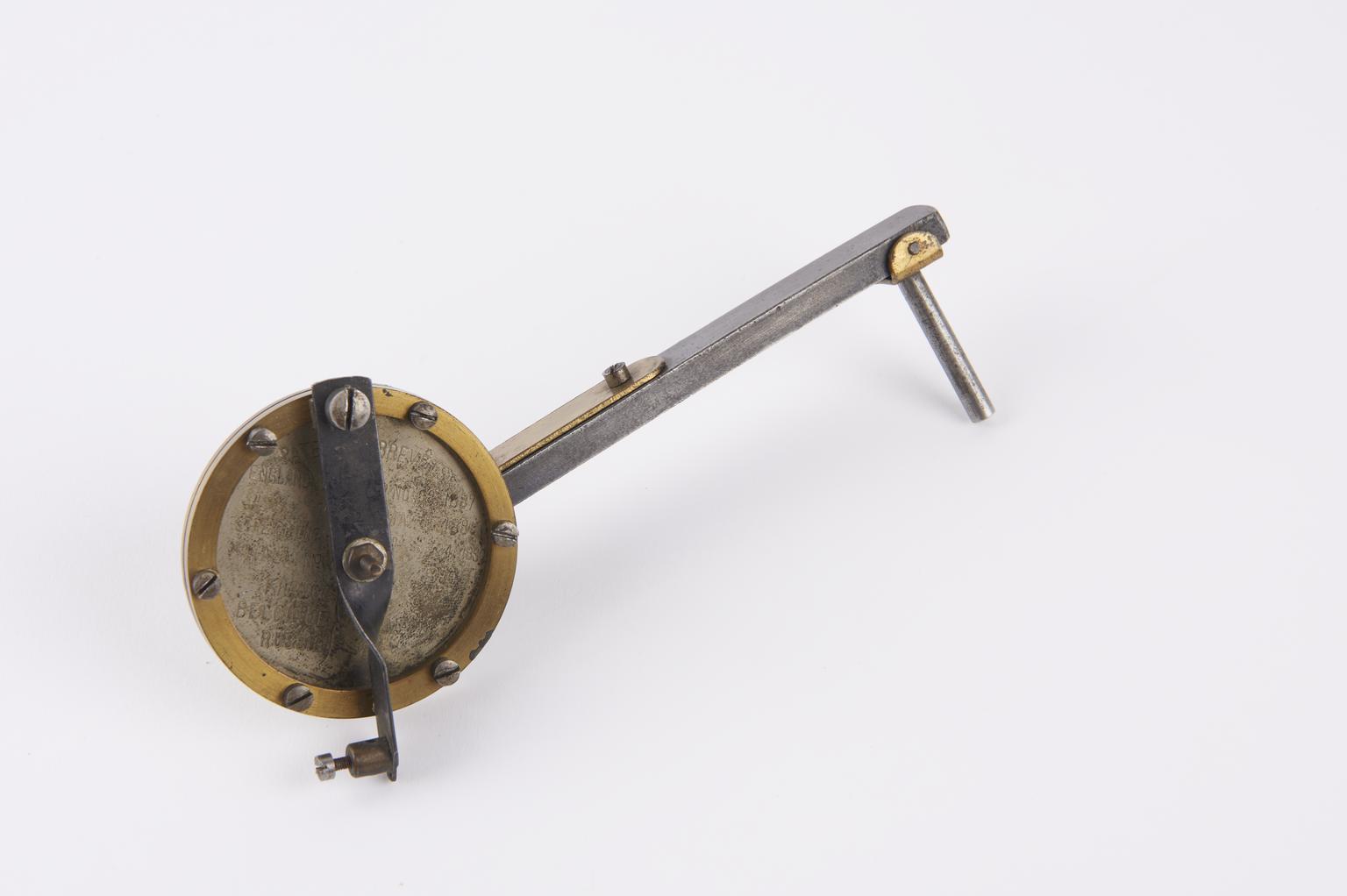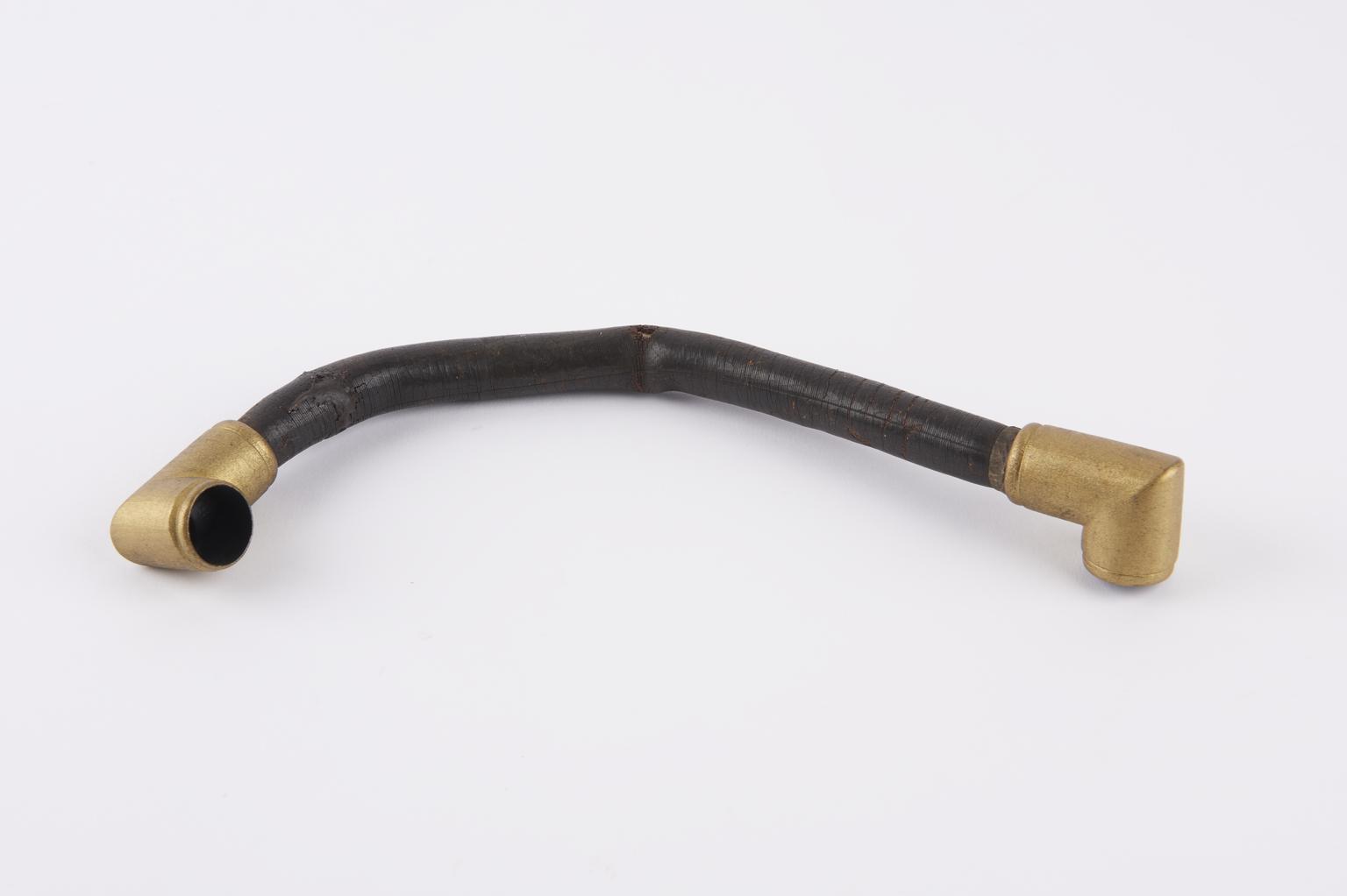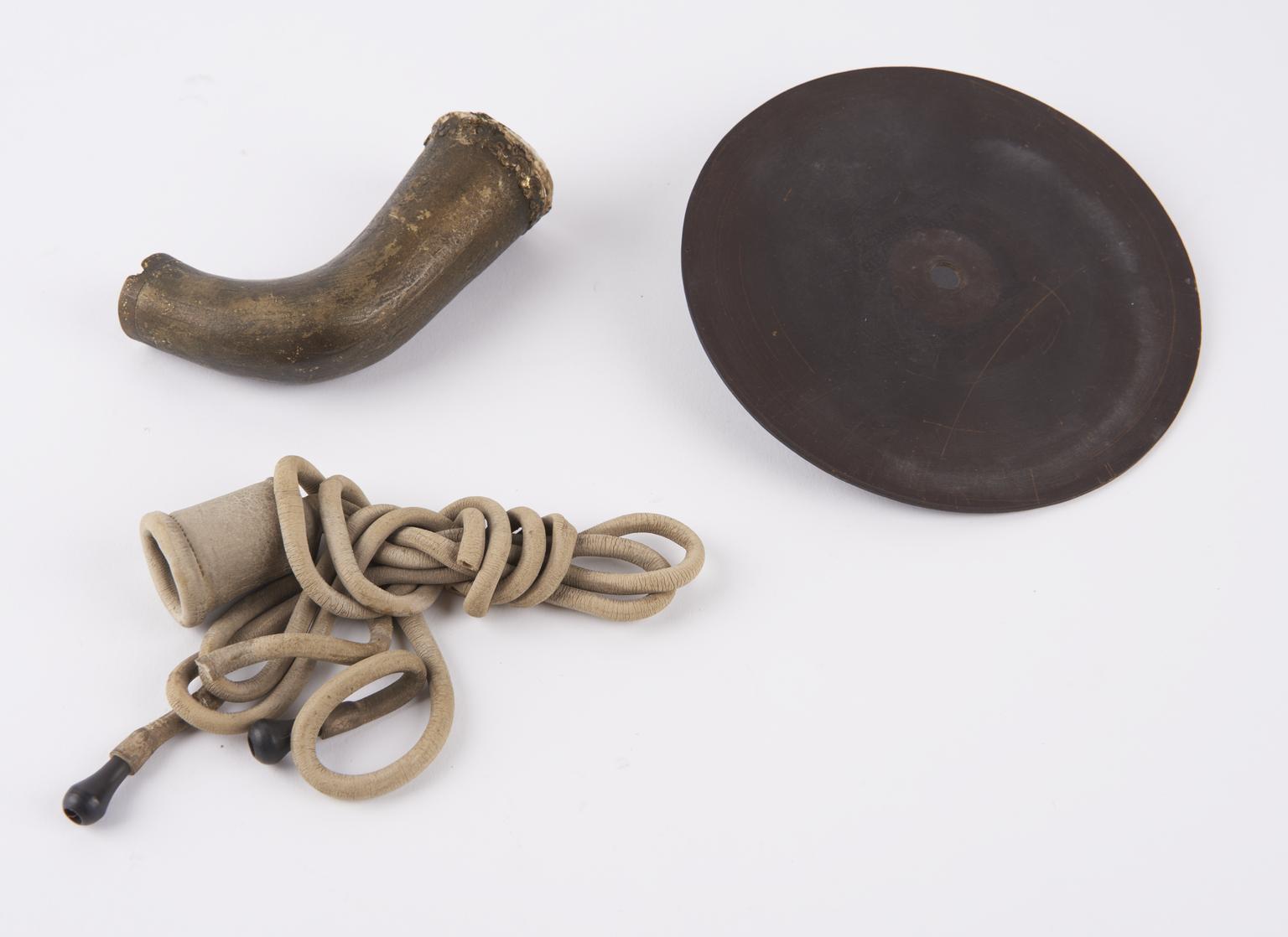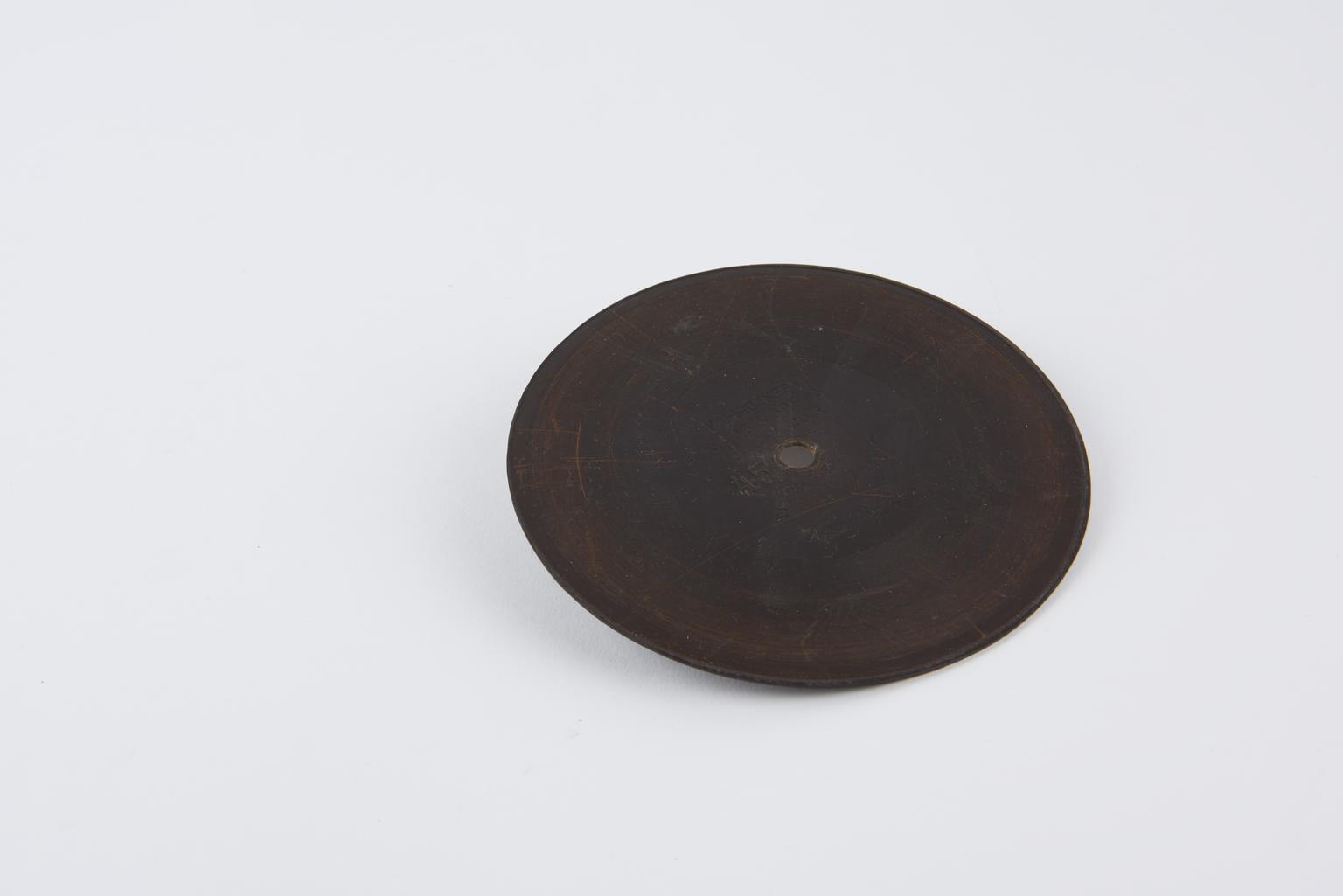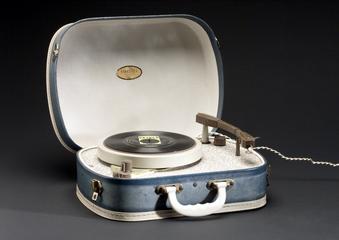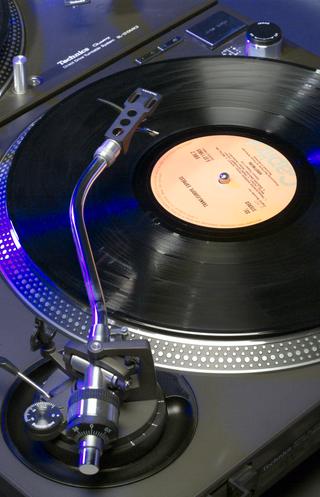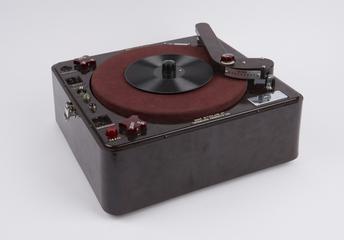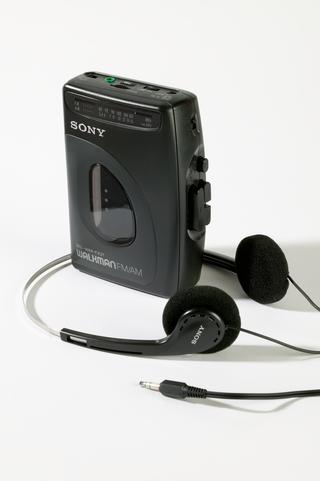Early example of gramophone by Berliner, with ear tubes, horn, two records and one point stamped 'E. Berliner Grammophon D.R.P. 45048'.
This gramophone consists simply of a turntable rotated by hand and a rather crude form of sound-box, fitted with a cardboard horn. The sound-box is mounted on a swinging arm which is pivoted to the base frame so that it can swing across the record as its stylus follows the grove.
Emile Berliner was a German clerk in a Washington haberdashers. In 1887 he patented a form of recording in which sound waves were photoengraved as a wavy spiral on a zinc disc. He called his machine the Gramophone. Unlike Edison's phonograph cylinders, gramophone discs could be stamped out cheaply; eventually, using wax for recording, they became the basis of the record industry. But the first commercial appearance of Berliner's invention was this toy, made in Germany by Kammerer und Reinhardt of Waltershausen.
This gramophone was made about 1890 and embodies a few improvements on Berliner's orginal model of 1887.







